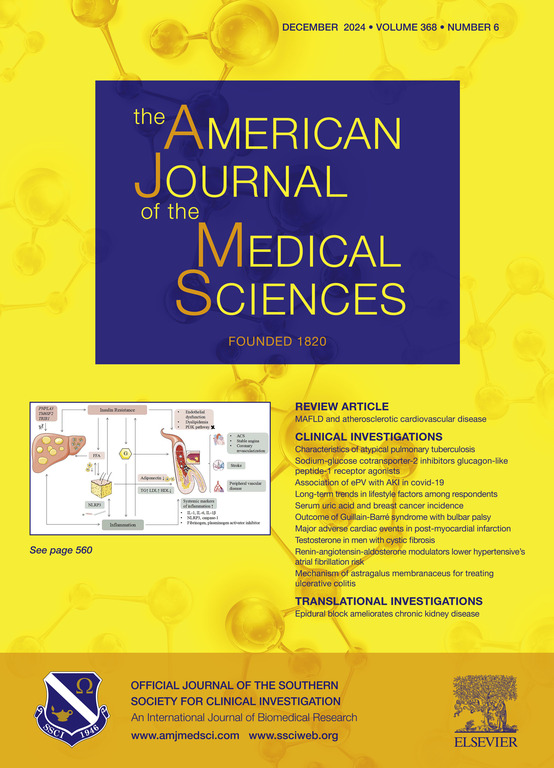Medication-induced fractures: Screening and treatment strategies
IF 2.3
4区 医学
Q2 MEDICINE, GENERAL & INTERNAL
引用次数: 0
Abstract
Medication-induced osteoporosis leads to substantial fracture morbidity. With polypharmacy and the aging population in the United States, significant increases in medication-associated fractures are predicted. The most common medication to cause osteoporosis and increase fractures is glucocorticoids. Many other therapies, including loop diuretics, SGLT2 inhibitors, thiazolidinediones, proton pump inhibitors, selective serotonin reuptake inhibitors, heparin, warfarin, antiepileptics, aromatase inhibitors, anti-androgen therapies, gonadotropin-releasing hormone antagonists, and calcineurin inhibitors are associated with increased fracture risks. Here, we review the latest evidence for fracture risk for these medications and discuss fracture risk screening and management strategies.
药物诱发骨折:筛查和治疗策略。
药物引起的骨质疏松症导致大量骨折发病。随着多种药物的使用和美国人口的老龄化,预计与药物相关的骨折将大幅增加。导致骨质疏松症和骨折增加的最常见药物是糖皮质激素。其他许多疗法,包括襻利尿剂、SGLT2 抑制剂、噻唑烷二酮类、质子泵抑制剂、选择性血清素再摄取抑制剂、肝素、华法林、抗癫痫药、芳香化酶抑制剂、抗雄激素疗法、促性腺激素释放激素拮抗剂和钙神经蛋白抑制剂都与骨折风险增加有关。在此,我们回顾了这些药物的最新骨折风险证据,并讨论了骨折风险筛查和管理策略。
本文章由计算机程序翻译,如有差异,请以英文原文为准。
求助全文
约1分钟内获得全文
求助全文
来源期刊
CiteScore
4.40
自引率
0.00%
发文量
303
审稿时长
1.5 months
期刊介绍:
The American Journal of The Medical Sciences (AJMS), founded in 1820, is the 2nd oldest medical journal in the United States. The AJMS is the official journal of the Southern Society for Clinical Investigation (SSCI). The SSCI is dedicated to the advancement of medical research and the exchange of knowledge, information and ideas. Its members are committed to mentoring future generations of medical investigators and promoting careers in academic medicine. The AJMS publishes, on a monthly basis, peer-reviewed articles in the field of internal medicine and its subspecialties, which include:
Original clinical and basic science investigations
Review articles
Online Images in the Medical Sciences
Special Features Include:
Patient-Centered Focused Reviews
History of Medicine
The Science of Medical Education.

 求助内容:
求助内容: 应助结果提醒方式:
应助结果提醒方式:


